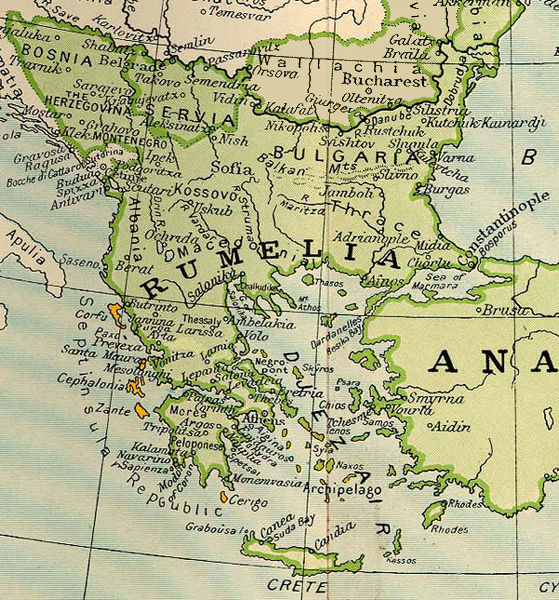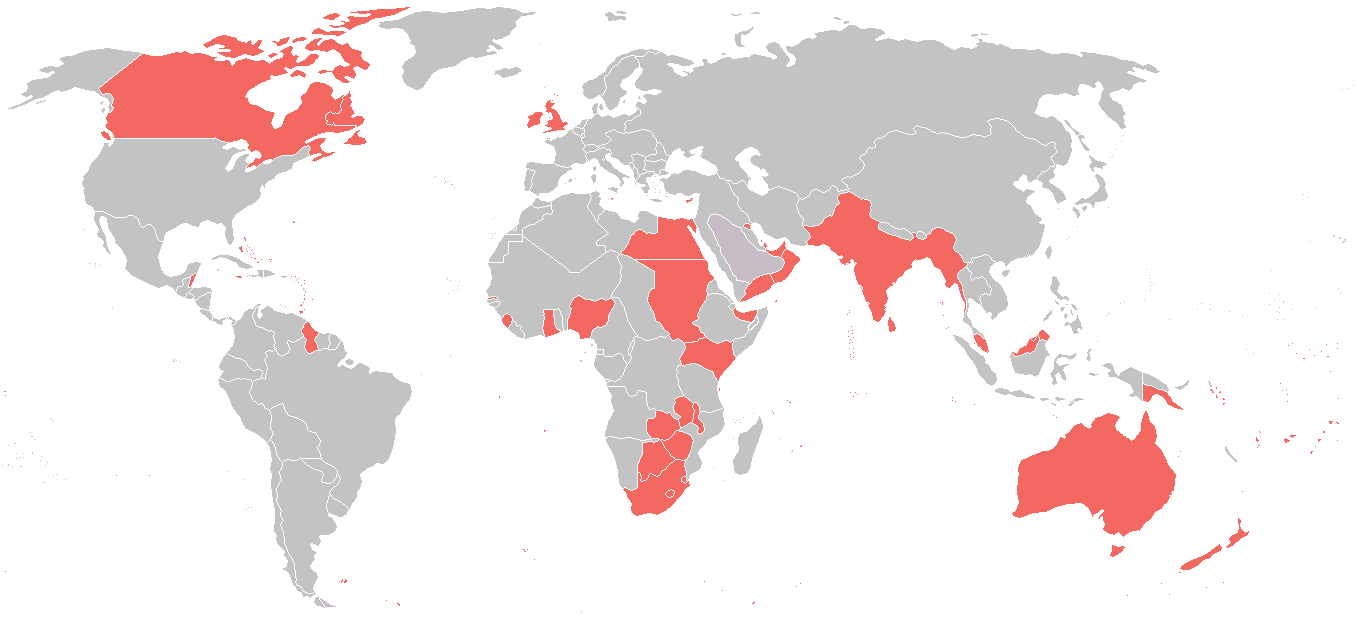|
Sanjak Of Dedeağaç
The Sanjak of Dedeağaç (Ottoman Turkish: ''Liva-i Dedeağaç'', ), originally in 1878–1884 the Sanjak of Dimetoka (''Liva-i Dimetoka'', Υποδιοίκησις Διδυμοτείχου), was a second-level province (''sanjak'') of the Ottoman Empire in Thrace, forming part of the Adrianople Vilayet. Its capital was Dedeağaç, modern Alexandroupolis in Greece. History and administrative division The ''sanjak'' was created in 1878 out of the territory of the ''sanjaks'' of Gallipoli and Adrianople, as well as the island of Samothrace, which had hitherto belonged to the Vilayet of the Archipelago. The capital was originally at Dimetoka (Didymoteicho), but was moved to Dedeağaç (Alexandroupolis) in 1884. Dimetoka itself later returned under the ''sanjak'' of Adrianople. It comprised three sub-provinces or ''kazas'', which were further subdivided into ''nahiyes'': * ''Kaza'' of Dedeağaç (mod. Alexandroupolis): Ferecik, Mekri, Sahinler, Samothrace (Tr. Semendrek), Doğ ... [...More Info...] [...Related Items...] OR: [Wikipedia] [Google] [Baidu] |
Sanjak
A sanjak or sancak (, , "flag, banner") was an administrative division of the Ottoman Empire. The Ottomans also sometimes called the sanjak a liva (, ) from the name's calque in Arabic and Persian. Banners were a common organization of nomadic groups on the Eurasian Steppe including the early Turks, Mongols, and Manchus and were used as the name for the initial first-level territorial divisions at the formation of the Ottoman Empire. Upon the empire's expansion and the establishment of eyalets as larger provinces, sanjaks were used as the second-level administrative divisions. They continued in this purpose after the eyalets were replaced by vilayets during the Tanzimat reforms of the 19th century. Sanjaks were typically headed by a bey or sanjakbey. The Tanzimat reforms initially placed some sanjaks under kaymakams and others under mutasarrifs; a sanjak under a mutasarrif was known as a mutasarriflik. The districts of each sanjak were known as kazas. These were ini ... [...More Info...] [...Related Items...] OR: [Wikipedia] [Google] [Baidu] |
Makri, Evros
Makri (Greek: Μάκρη) is a village and a municipal community of the city of Alexandroupolis, Evros regional unit, Greece. In 2021 its population was 1,811 for the municipal community. It is situated on the Aegean Sea coast, 12 km west of downtown Alexandroupolis. Makri has an exit on the A2 motorway (Egnatia Odos), that passes north of the village. Subdivisions *Makri, pop. 924 in 2011 * Dikella, pop. 290 *Ennato, pop. 268 *Koimisi Theotokou, pop. 48 *Mesimvria, pop. 145 *Panorama, pop. 37 *Paralia Dikellon, pop. 102 *Plaka, pop. 105 Population History Makri was ruled by the Ottoman Empire until the Balkan Wars of 1912 under the name Miri. It became a part of Bulgaria Bulgaria, officially the Republic of Bulgaria, is a country in Southeast Europe. It is situated on the eastern portion of the Balkans directly south of the Danube river and west of the Black Sea. Bulgaria is bordered by Greece and Turkey t ... after 1912. In 1920 it became a part of Greece, a ... [...More Info...] [...Related Items...] OR: [Wikipedia] [Google] [Baidu] |
History Of Edirne Province
History is the systematic study of the past, focusing primarily on the human past. As an academic discipline, it analyses and interprets evidence to construct narratives about what happened and explain why it happened. Some theorists categorize history as a social science, while others see it as part of the humanities or consider it a hybrid discipline. Similar debates surround the purpose of history—for example, whether its main aim is theoretical, to uncover the truth, or practical, to learn lessons from the past. In a more general sense, the term ''history'' refers not to an academic field but to the past itself, times in the past, or to individual texts about the past. Historical research relies on primary and secondary sources to reconstruct past events and validate interpretations. Source criticism is used to evaluate these sources, assessing their authenticity, content, and reliability. Historians strive to integrate the perspectives of several sources to develop a ... [...More Info...] [...Related Items...] OR: [Wikipedia] [Google] [Baidu] |
Ottoman Greece
The vast majority of the territory of present-day Greece was at some point incorporated within the Ottoman Empire. The period of Ottoman rule in Greece, lasting from the mid-15th century until the successful Greek War of Independence broke out in 1821 and the First Hellenic Republic was proclaimed in 1822, is known in Greece as Turkocracy (). Some regions, like the Ionian islands and various temporary Republic of Venice, Venetian possessions of the Stato da Mar, were not incorporated in the Ottoman Empire. The Mani Peninsula in the Peloponnese was not fully integrated into the Ottoman Empire, but was under Ottoman suzerainty. The Eastern Roman Empire, which ruled most of the Greek-speaking world for over 1100 years, had been fatally weakened since the Fourth Crusade of 1204. Having defeated the Serbs, the Ottomans fall of Constantinople, captured Constantinople in 1453 and soon advanced southwards capturing Athens in 1456 and the Peloponnese in 1460. By the early 16th century, a ... [...More Info...] [...Related Items...] OR: [Wikipedia] [Google] [Baidu] |
Sanjaks Of The Ottoman Empire In Europe
A sanjak or sancak (, , "flag, banner") was an administrative division of the Ottoman Empire. The Ottomans also sometimes called the sanjak a liva (, ) from the name's calque in Arabic and Persian. Banners were a common organization of nomadic groups on the Eurasian Steppe including the early Turks, Mongols, and Manchus and were used as the name for the initial first-level territorial divisions at the formation of the Ottoman Empire. Upon the empire's expansion and the establishment of eyalets as larger provinces, sanjaks were used as the second-level administrative divisions. They continued in this purpose after the eyalets were replaced by vilayets during the Tanzimat reforms of the 19th century. Sanjaks were typically headed by a bey or sanjakbey. The Tanzimat reforms initially placed some sanjaks under kaymakams and others under mutasarrifs; a sanjak under a mutasarrif was known as a mutasarriflik. The districts of each sanjak were known as kazas. These were initi ... [...More Info...] [...Related Items...] OR: [Wikipedia] [Google] [Baidu] |
Allies Of World War I
The Allies or the Entente (, ) was an international military coalition of countries led by the French Republic, the United Kingdom, the Russian Empire, the United States, the Kingdom of Italy, and the Empire of Japan against the Central Powers of the German Empire, Austria-Hungary, the Ottoman Empire, and the Kingdom of Bulgaria in World War I (1914–1918). By the end of the first decade of the 20th century, the major European powers were divided between the Triple Entente and the Triple Alliance. The Triple Entente was made up of the United Kingdom, France, and Russia. The Triple Alliance was originally composed of Germany, Austria–Hungary, and Italy, but Italy remained neutral in 1914. As the war progressed, each coalition added new members. Japan joined the Entente in 1914 and, despite proclaiming its neutrality at the beginning of the war, Italy also joined the Entente in 1915. The term "Allies" became more widely used than "Entente", although the United Kingdom, Fran ... [...More Info...] [...Related Items...] OR: [Wikipedia] [Google] [Baidu] |
Kingdom Of Bulgaria
The Tsardom of Bulgaria (), also known as the Third Bulgarian Tsardom (), usually known in English as the Kingdom of Bulgaria, or simply Bulgaria, was a constitutional monarchy in Southeastern Europe, which was established on , when the Bulgarian state was raised from a Principality of Bulgaria, principality to a tsardom. Prince Ferdinand I of Bulgaria, Ferdinand, founder of the Bulgarian royal family, royal family, was crowned as Tsar of Bulgaria, tsar at the Declaration of Independence, mainly because of his military plans and for seeking options for unification of all lands in the Balkans region with an ethnic Bulgarian majority (lands that had been seized from Bulgaria and given to the Ottoman Empire in the Treaty of Berlin (1878), Treaty of Berlin). He and his successors were reckoned as kings internationally. The state was almost constantly at war throughout its existence, lending to its nickname as "the Balkan Prussia". For several years Bulgaria mobilized an army of more ... [...More Info...] [...Related Items...] OR: [Wikipedia] [Google] [Baidu] |
Maritsa
Maritsa or Maritza ( ), also known as Evros ( ) and Meriç ( ), is a river that runs through the Balkans in Southeast Europe. With a length of ,Statistical Yearbook 2017 National Statistical Institute (Bulgaria), p. 17 it is the List of rivers of Europe, longest river that runs solely in the interior of the Balkans, Balkan peninsula, and one of the List of rivers of Europe#Rivers of Europe by discharge, largest in Europe by discharge. It flows through Bulgaria in its upper and middle reaches, while its lower course forms much of the border between Greece and Turkey. Its drainage area is about , of which 66.2% is in Bulgaria, 27.5% in Turkey, and 6.3% in Greece. It is the main river of the historical region of Thrace, most of which lies in its drainage basin. It has its origin ... [...More Info...] [...Related Items...] OR: [Wikipedia] [Google] [Baidu] |
Enez
Enez is a town in Edirne Province, in East Thrace, Turkey. The ancient name of the town was Ainos (), Latinised as Aenus. It is the seat of Enez District.İlçe Belediyesi Turkey Civil Administration Departments Inventory. Retrieved 1 March 2023. Its population is 4,301 (2022). The mayor is Özkan Günenç ( CHP). Enez consists of an old town centre, backing on to the Meriç/Evros river forming the border with neighbouring ; the harbour and Pırlanta Beach, 3 km southwest across the lagoon; and Altınkum Sahili (Golden Sands Beach), another 2 km south, which has been ... [...More Info...] [...Related Items...] OR: [Wikipedia] [Google] [Baidu] |
Mega Dereio
Mega Dereio () is a village in the central part of the Evros regional unit in Greece. It is part of the municipal unit of Orfeas within the municipality of Soufli. Together with 6 other villages, it forms the community of Mikro Dereio. It is situated near the upper course of the river Erythropotamos, in the Eastern Rhodope Mountains. The Greek National Road 53 (Alexandroupoli – Mikro Dereio – Kyprinos – Ormenio) passes through the village. Population History The village was founded by the Ottoman Turks in the 14th century. It was known as ''Büyük Dervent'' in Turkish, and Голям Дервент ''Golyam Dervent'' in Bulgarian. According to Anastas Razboynikov, in 1830 the village numbered 700 Bulgarian and 50 Turk houses, in 1878 400 Bulgarian and 80 Turks houses and in 1912 420 Bulgarian and 80 Turk houses. According to professor Lyubomir Miletich, the 1912 population had around 300 Bulgarian families and 100 Turk families. In August 1913 the village was attacke ... [...More Info...] [...Related Items...] OR: [Wikipedia] [Google] [Baidu] |
Tychero
Tycheró (, ) is a town and a former municipality in the Evros regional unit, East Macedonia and Thrace, Greece. Since the 2011 local government reform it is part of the municipality Soufli, of which it is a municipal unit. The municipal unit has an area of 220.411 km2. Tychero is situated near the river Evros, which forms the border with Turkey here. History Under Ottoman rule Tychero was known as ''Bıdıklı'' (Greek: Μπίντικλι). After the Balkan Wars (1912-1913) it became part of Bulgaria, and it became part of Greece in 1920. It was renamed to ''Tychio'', which was changed to the current name Tychero in 1953. In February 2006 Tychero was struck by a flood of the Evros river. The town is populated by Arvanites originally from Ibriktepe, now in Turkey. Subdivisions The municipal unit Tychero is subdivided into the following communities (constituent villages in brackets): * Fylakto *Lefkimmi *Lyra * Provatonas (Provatonas, Tavri, Thymaria) *Tychero Population Tr ... [...More Info...] [...Related Items...] OR: [Wikipedia] [Google] [Baidu] |




